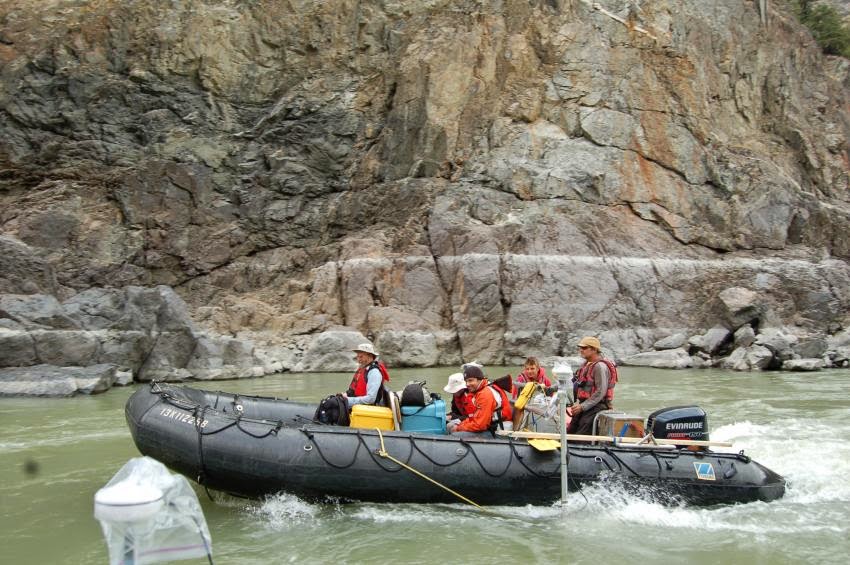
A Simon Fraser University-led research team studying river flow in bedrock canyons for the first time has discovered that previous conceptions of flow and incision in bedrock-rivers are wrong.
Their study appears in the journal Nature on-line today. A Nature reviewer who recommended the journal publish the study had this to say about its ground-breaking discovery. The team ” …had the vision to go, like Star Trek, where no one has gone before: to a steep and violent bedrock canyon, with surprising results.”
SFU geography professor Jeremy Venditti led the team of SFU, University of Ottawa and University of British Columbia researchers on a scientific expedition on the Fraser River.
“For the first time, we used oceanographic instruments, commonly used to measure three-dimensional river flow velocity in low land rivers, to examine flow through steep bedrock canyons,” says Venditti. “The 3-D instruments capture downstream, cross-stream and vertical flow velocity.”
To carry out their Star Trek-like expedition, the researchers put their lives into the experienced hands of Fraser River Rafting Expeditions, which took them into 42 bedrock canyons. Equipped with acoustic Doppler current profilers to measure velocity fields, they rafted 486 kilometres of the Fraser River from Quesnel to Chilliwack. Their raft navigated turbulent waters normally only accessed by thrill-seeking river rafters.
“Current models of bedrock-rivers assume flow velocity is uniform, without changes in the downstream direction. Our results show this is not the case,” says Colin Rennie, an Ottawa U civil engineering professor.
“We observed a complicated flow field in which high velocity flow plunges down the bottom of the canyon forming a velocity inversion and then rises along the canyon walls. This has important implications for canyon erosion because the plunging flow patterns result in greater flow force applied to the bed.”
The scientists conclude that river flow in bedrock canyons is far more complex than first thought and the way scientists have linked climate, bedrock incision and the uplift of mountains needs to be rethought. They say the complexity of river flow plays an important role in deciding bedrock canyon morphology and river width.
“The links between the uplift of mountain ranges, bedrock incision by rivers and climate is one of the most important open questions in science,” notes Venditti. “The incision that occurs in bedrock canyons is driven by climate because the climate system controls precipitation and the amount of water carried in rivers. River flow drives the erosional mechanisms that cut valleys and allow the uplift of majestic mountain peaks.”
Venditti adds that river flow velocity in bedrock canyons also influences the delivery of sediment from mountain-rivers to lowland rivers.
“Sediment delivery controls water levels and stability of lowland rivers, which has important implications for lowland river management, flooding impacts to infrastructure, availability of fish habitat and more.
“Lowland river floodplains and deltas are the most densely populated places on earth, so understanding what is happening in mountain rivers is important because our continued development of these areas is significantly affected by what is happening upstream.”
More information:
Flow in bedrock canyons, Nature 513, 534–537 (25 September 2014) DOI: 10.1038/nature13779
Note : The above story is based on materials provided by Simon Fraser University










